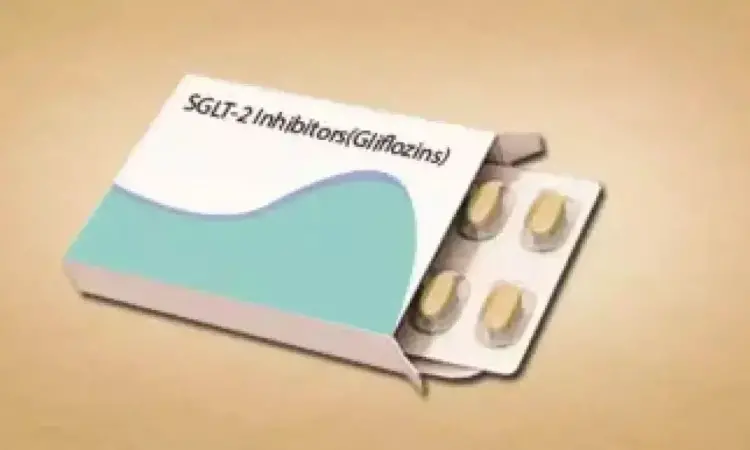- Home
- Medical news & Guidelines
- Anesthesiology
- Cardiology and CTVS
- Critical Care
- Dentistry
- Dermatology
- Diabetes and Endocrinology
- ENT
- Gastroenterology
- Medicine
- Nephrology
- Neurology
- Obstretics-Gynaecology
- Oncology
- Ophthalmology
- Orthopaedics
- Pediatrics-Neonatology
- Psychiatry
- Pulmonology
- Radiology
- Surgery
- Urology
- Laboratory Medicine
- Diet
- Nursing
- Paramedical
- Physiotherapy
- Health news
- Fact Check
- Bone Health Fact Check
- Brain Health Fact Check
- Cancer Related Fact Check
- Child Care Fact Check
- Dental and oral health fact check
- Diabetes and metabolic health fact check
- Diet and Nutrition Fact Check
- Eye and ENT Care Fact Check
- Fitness fact check
- Gut health fact check
- Heart health fact check
- Kidney health fact check
- Medical education fact check
- Men's health fact check
- Respiratory fact check
- Skin and hair care fact check
- Vaccine and Immunization fact check
- Women's health fact check
- AYUSH
- State News
- Andaman and Nicobar Islands
- Andhra Pradesh
- Arunachal Pradesh
- Assam
- Bihar
- Chandigarh
- Chattisgarh
- Dadra and Nagar Haveli
- Daman and Diu
- Delhi
- Goa
- Gujarat
- Haryana
- Himachal Pradesh
- Jammu & Kashmir
- Jharkhand
- Karnataka
- Kerala
- Ladakh
- Lakshadweep
- Madhya Pradesh
- Maharashtra
- Manipur
- Meghalaya
- Mizoram
- Nagaland
- Odisha
- Puducherry
- Punjab
- Rajasthan
- Sikkim
- Tamil Nadu
- Telangana
- Tripura
- Uttar Pradesh
- Uttrakhand
- West Bengal
- Medical Education
- Industry
SGLT2 Inhibitors and GLP-1 Receptor Agonists Linked to Fewer COPD Exacerbations in diabetes patients with COPD: JAMA

Researchers had found in a new study that sodium-glucose cotransporter-2 inhibitors (SGLT-2is) and glucagon-like peptide-1 receptor agonists (GLP-1RAs) associated with reduced risks of chronic obstructive pulmonary disease (COPD) exacerbations for patients with type 2 diabetes (T2D) and active COPD. This study was conducted by Avik Ray and fellow researchers published in JAMA Internal Medicine.
The authors used data from three large US insurance claims databases: Optum de identified Clinformatics Data Mart Database (2013-2023), IBM Health MarketScan (2013-2021), and Medicare fee-for-service (2013-2020). It was conducted as a comparative effectiveness research study with the help of three 1:1 propensity scores–matched cohort studies, simulating target trials comparing different glucose-lowering medications. The patients included were aged 40 years or more with a diagnosis of T2D and active COPD. Analysis was performed between January and June 2024.
Study Groups and Exposures
Patients were grouped into three groups for treatment comparison:
SGLT-2i vs DPP-4i: 27,991 matched pairs
GLP-1RA vs DPP-4i: 32,107 matched pairs
SGLT-2i vs GLP-1RA: 36,218 matched pairs
The first moderate or severe COPD exacerbation was the primary outcome, an outpatient visit for COPD with an oral glucocorticoid prescription or a hospitalization for COPD.
Key Results
Over a median follow-up of 145 days (IQR, 61-355), the study determined:
SGLT-2is vs DPP-4is:
COPD exacerbation rate: 9.26 vs 11.4 per 100 person-years (PYs)
Hazard ratio (HR): 0.81 (95% CI, 0.76-0.86)
Incidence rate difference (IRD): -2.20 per 100 PYs (95% CI, -2.83 to -1.58)
GLP-1RAs vs DPP-4is:
COPD exacerbation rate: 9.89 vs 11.49 per 100 PYs
HR: 0.86 (95% CI, 0.81-0.91)
IRD: -1.60 per 100 PYs (95% CI, -2.18 to -1.02)
SGLT-2is vs GLP-1RAs:
COPD exacerbation rate: 9.47 vs 10.00 per 100 PYs
HR: 0.94 (95% CI, 0.89-1.00)
IRD: -0.55 per 100 PYs (95% CI, -1.09 to -0.01)
The results of this comparative effectiveness research study suggest that SGLT-2is and GLP-1RAs were associated with a reduced risk of moderate or severe COPD exacerbations compared with dipeptidyl peptidase 4 inhibitors in adults with type 2 diabetes and active COPD. This may inform prescribing of glucose-lowering medications among patients with type 2 diabetes and active COPD.
Reference:
Dr Riya Dave has completed dentistry from Gujarat University in 2022. She is a dentist and accomplished medical and scientific writer known for her commitment to bridging the gap between clinical expertise and accessible healthcare information. She has been actively involved in writing blogs related to health and wellness.
Dr Kamal Kant Kohli-MBBS, DTCD- a chest specialist with more than 30 years of practice and a flair for writing clinical articles, Dr Kamal Kant Kohli joined Medical Dialogues as a Chief Editor of Medical News. Besides writing articles, as an editor, he proofreads and verifies all the medical content published on Medical Dialogues including those coming from journals, studies,medical conferences,guidelines etc. Email: drkohli@medicaldialogues.in. Contact no. 011-43720751


